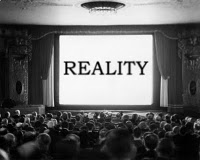Blog
Is anything real?
 How many times have parents complained that their children spend too much time on the Internet or in games? The statement is probably true because there needs to be a balance between our physical and digital worlds but first let's investigate what is happening in those digital worlds.Though I'm not a gamer myself I can see how games give people fluidity of identity (you can be male, female, or not even human. They allow the user to explore new realities. It can be mindless entertainment used as an escape. It allows groups of people to interact so it's a participatory culture. Users can also explore Identity Tourism and try new identities which can be liberating. Does any of that not seem real? A recent study revealed groups such as the disabled find Virtual Communities like Second Life liberating because it allows them to interact on a more equal basis with other people. In these communities people aren't hindered by their sex, ethnicity or disability. Though they're in a virtual environment this gives them a very real ability to be empowered."The way we understand ourselves and define our identities depends very much on the attitudes derived from cultural experience. We see ourselves or who we want to be in others: friends, parents, popular figures, etc. This constitutes the process we call identification. In representation, this sense of image we have of 'self' is constructed through the feeling we have of becoming absorbed into a character's role or position in a narrative, understanding their thoughts, feelings, reactions, and taking on their point of view" (Swanson p. 125}.
How many times have parents complained that their children spend too much time on the Internet or in games? The statement is probably true because there needs to be a balance between our physical and digital worlds but first let's investigate what is happening in those digital worlds.Though I'm not a gamer myself I can see how games give people fluidity of identity (you can be male, female, or not even human. They allow the user to explore new realities. It can be mindless entertainment used as an escape. It allows groups of people to interact so it's a participatory culture. Users can also explore Identity Tourism and try new identities which can be liberating. Does any of that not seem real? A recent study revealed groups such as the disabled find Virtual Communities like Second Life liberating because it allows them to interact on a more equal basis with other people. In these communities people aren't hindered by their sex, ethnicity or disability. Though they're in a virtual environment this gives them a very real ability to be empowered."The way we understand ourselves and define our identities depends very much on the attitudes derived from cultural experience. We see ourselves or who we want to be in others: friends, parents, popular figures, etc. This constitutes the process we call identification. In representation, this sense of image we have of 'self' is constructed through the feeling we have of becoming absorbed into a character's role or position in a narrative, understanding their thoughts, feelings, reactions, and taking on their point of view" (Swanson p. 125}.
Let's also compare previous media. Are they more real? Let me give you an example. Without doing any research, guess how big the painting of the Mona Lisa is. Because most of us have never been to the Louvre in Paris and have only seen it in magazines or on television we might think that it is the size of a typical painting that we see in local galleries. In reality it's only 77 cm — 53 cm. I was shocked the first time I saw it. I was also shocked when I saw Big Ben for the first time because it wasn't big it all - I started calling it medium sized Ben. What this reveals this reveals is that even in our real world with traditional media such as televisions and magazines our interpretation of reality is mediated. The idea of "real" is actually very subjective.
"At its most basic, the term 'representation' refers to the way images and language actively construct meanings according to sets of 'conventions' shared by and familiar to makers and audience"(Swanson p 123).Remember the television footage from the Gulf War where the embedded reporters were supposedly reporting from the front lines? This style of reporting was mimicking Vietnam war correspondence to promote the idea of valid reporting. In reality most of the reporters were many miles from any danger but they still wore bullet-proof vests and helmets to promote authenticity.
What new technology has done is it has provided more perspectives and counter arguments through blogs, YouTube, Facebook, TXTing, etc. This is making the world more transparent so people can make informed decisions. I think that is more real."A change has taken place in the human mind.... The conviction is already very far from being universal, that the times are pregnant with change; and that [our era]... will be known to posterity as the era of the greatest of revolutions... in the human mind, and in the whole constitution of human society.... The first of the leading peculiarities of the present age is, that it is an age of transition."
-John Stewart Mill, "The Spirit of the Age" (1831)
(Thornbum, David. p.1)Bibliography
Thorburn, David. Jenkins, Henry. (2003) Rethinking media change: the aesthetics of transition. MIT Press. Massachusetts
Swanson, Gillian. The Media Studies Book, Edited by David Lusted. Comedia, London, 1991. From, The media studies book of readings, 1993
Gutch, R. Wollen, T. Learnig the Media, An Introduction to Media Teaching, Machmillan, London, 1987.
Wollen, Peter. Cinema/Americanism/The Robot. From Naremore, James. Brantlinger, Patrick (Ed.) (1991) Modernity and Mass Culture. Indiana University Press: Bloomington and Indianapolis.
 About
About
Brynn


